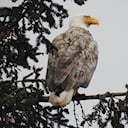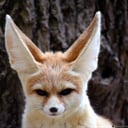What is a general name for a group of wolves?
Wolves form packs. The average pack consists of a family of 5–11 animals (1–2 adults, 3–6 juveniles and 1–3 yearlings), or sometimes two or three such families, with exceptionally large packs consisting of 42 wolves being known. In ideal conditions, the mated pair produces pups every year, with such offspring typically staying in the pack for 10–54 months before dispersing. Triggers for dispersal include the onset of sexual maturity and competition within the pack for food. The distance travelled by dispersing wolves varies widely; some stay in the vicinity of the parental group, while other individuals may travel great distances of 390 km, 206 km, and 670 km from their natal packs. A new pack is usually founded by an unrelated dispersing male and female, travelling together in search of an area devoid of other hostile packs. Wolf packs rarely adopt other wolves into their fold, and typically kill them. In the rare cases where other wolves are adopted, the adoptee is almost invariably an immature animal (1–3 years of age) unlikely to compete for breeding rights with the mated pair. In some cases, a lone wolf is adopted into a pack to replace a deceased breeder. During times of ungulate abundance (migration, calving etc.), different wolf packs may temporarily join forces.










